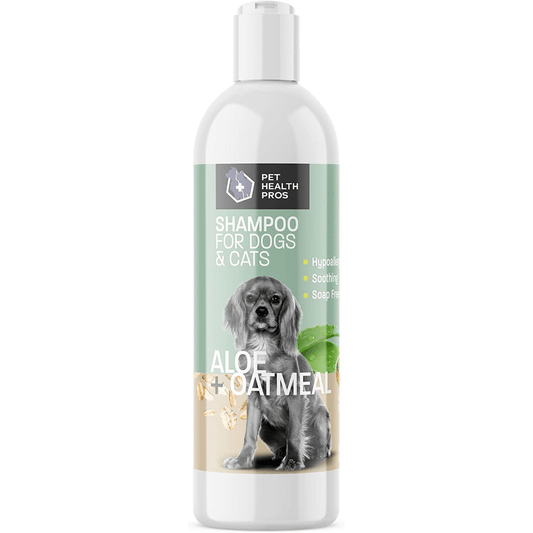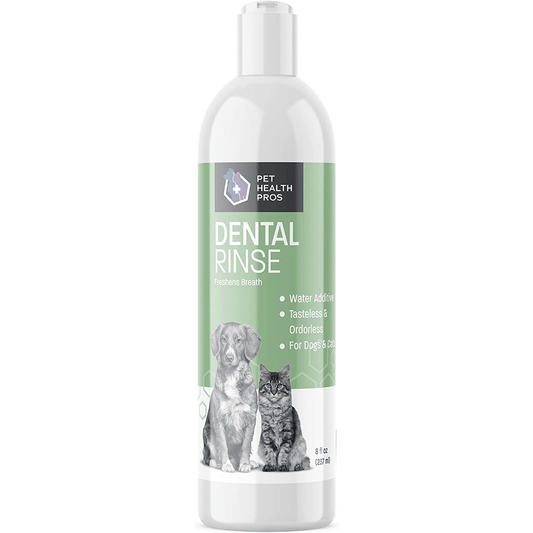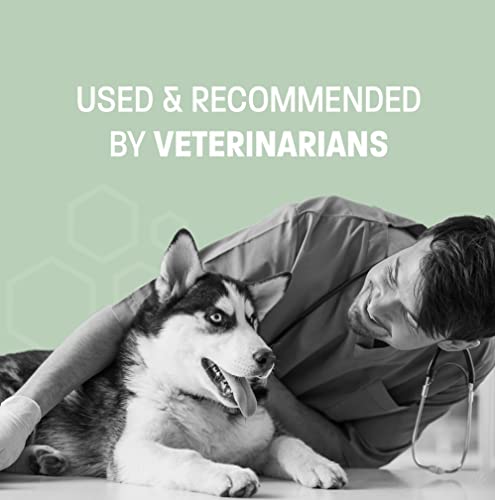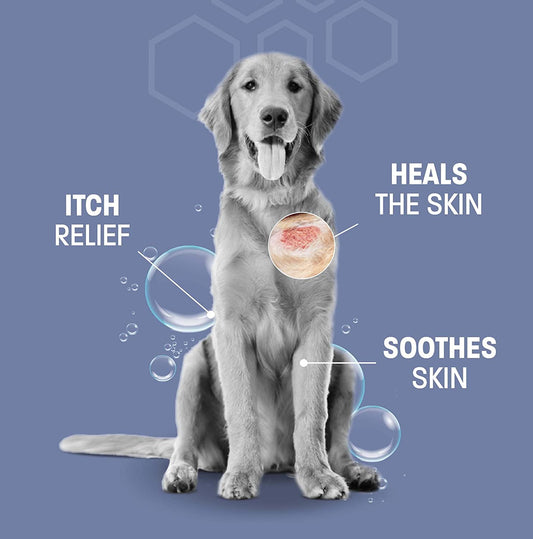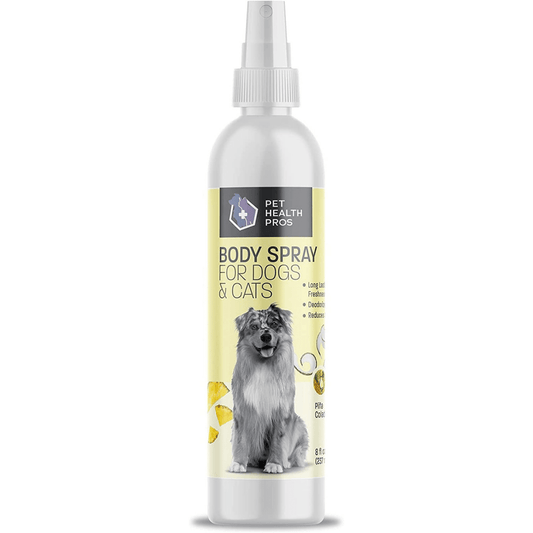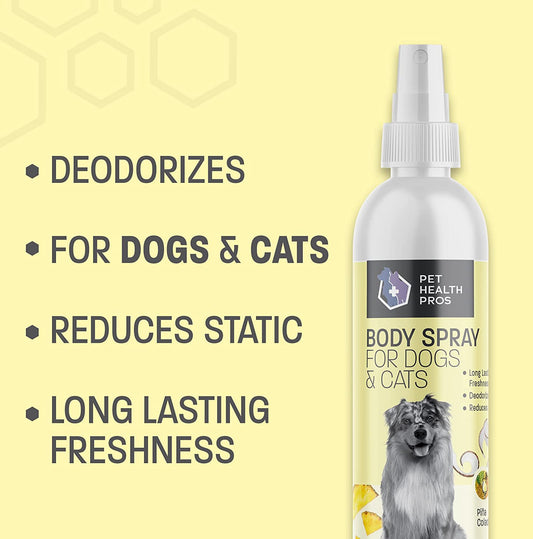Antiseptic flush is an essential part of maintaining your dog's health and hygiene. Understanding how to use it properly and safely, as well as choosing the right product, is crucial for your dog's well-being. In this article, we will explore the benefits of antiseptic flush, how to select the right one, and the best practices for incorporating it into your dog's care routine.
Key Takeaways
- Choose an antiseptic flush that is safe for dogs and suitable for the intended use.
- Follow proper application techniques and consult with a veterinarian if unsure.
- Consider the frequency of use and integrate antiseptic flush into your dog's grooming routine.
- Be aware of potential risks and side effects, and take necessary precautions when using antiseptic flush.
- Select the best antiseptic flush based on factors such as ingredients, effectiveness, and your dog's specific needs.
Understanding Antiseptic Flush for Dogs
What is Antiseptic Flush?
Antiseptic flush is a solution used to clean and disinfect wounds, cuts, and abrasions on dogs. It helps prevent infection and promotes healing. The active ingredients in antiseptic flush may include chlorhexidine and benzalkonium chloride. These ingredients are known for their antiseptic and antimicrobial properties, making them effective in combating bacteria and other pathogens.
When using antiseptic flush, it's important to follow proper application techniques to ensure thorough cleansing and disinfection. Here are some key points to consider:
- Use a clean, sterile applicator to apply the antiseptic flush
- Gently flush the affected area, ensuring complete coverage
- Avoid excessive pressure to prevent further irritation
Remember: Always consult with a veterinarian before using antiseptic flush, especially for deep or serious wounds. Your veterinarian can provide specific guidance based on your dog's individual needs and health condition.
How Antiseptic Flush Works
Antiseptic flush works by cleansing and disinfecting the affected area, helping to prevent infection and promote healing. The active ingredients in the flush, such as chlorhexidine or povidone-iodine, target bacteria and other microorganisms, reducing the risk of contamination. This process is crucial for maintaining your dog's skin and coat health.
Using antiseptic flush is a simple yet effective way to address minor wounds, cuts, and abrasions. It is important to follow the instructions provided by the manufacturer for proper application and dosage. Consistent use of antiseptic flush can aid in the overall well-being of your pet.
Remember to consult your veterinarian for specific guidance on using antiseptic flush for your dog.
Benefits of Antiseptic Flush for Dogs
Antiseptic flush is an essential tool for maintaining your dog's skin and coat health. It helps to cleanse and disinfect minor wounds, cuts, and abrasions, preventing infections and promoting faster healing. Additionally, antiseptic flush can aid in the removal of debris and foreign material from the affected area, further reducing the risk of complications. When used as directed, antiseptic flush can be a valuable addition to your dog's first aid kit, providing immediate care for minor injuries and skin irritations. It is important to follow proper application techniques and consult with a veterinarian for specific guidance on its use.
Implementing antiseptic flush into your dog's care routine can contribute to their overall well-being. By integrating it with other grooming practices, you can ensure that your dog's skin and coat remain healthy and free from infections. However, it's crucial to maintain a balance and not overuse antiseptic flush, as excessive application can lead to skin irritation and dryness. Consulting with a veterinarian will help you establish the appropriate frequency of use and ensure that antiseptic flush complements your dog's overall health care plan.
Tip: Always perform a patch test before using a new antiseptic flush product to check for any adverse reactions or sensitivities.
Choosing the Right Antiseptic Flush
Factors to Consider
When considering the right antiseptic flush for your dog, it's important to evaluate several factors. These factors include the active ingredients, the concentration of the solution, and the pH balance. Each of these elements plays a crucial role in the effectiveness and safety of the antiseptic flush.
Additionally, it's essential to assess the specific needs of your dog, such as skin sensitivity, existing skin conditions, and any allergies. This personalized evaluation ensures that the chosen antiseptic flush is tailored to your dog's individual requirements.
Furthermore, a comparative analysis of different antiseptic flush products can be helpful. Consider creating a table to compare the key features, such as active ingredients, concentration, pH balance, and any additional benefits. This structured approach provides a clear overview of the available options, aiding in the decision-making process.
Lastly, it's advisable to seek recommendations from a veterinarian. Their expertise and knowledge can offer valuable insights into selecting the most suitable antiseptic flush for your dog's specific needs.
Types of Antiseptic Flush
When choosing the right antiseptic flush for your dog, it's important to consider the specific needs of your pet. Different types of antiseptic flush may be more suitable for certain skin conditions or injuries. It's essential to consult with a veterinarian to determine the most appropriate antiseptic flush for your dog's individual requirements. Additionally, understanding the active ingredients and their effects can help in making an informed decision. Here's a brief overview of the common types of antiseptic flush and their uses:
| Type of Antiseptic Flush | Common Uses |
|---|---|
| Chlorhexidine | Wound care |
| Povidone-Iodine | Skin disinfection |
| Benzalkonium Chloride | Ear cleaning |
It's important to note that the table above provides a general overview and does not substitute professional advice. Always seek guidance from a qualified veterinarian for specific recommendations and usage instructions.
Selecting the Best Antiseptic Flush for Your Dog
When selecting the best antiseptic flush for your dog, it's important to consider the specific needs of your pet. Factors such as skin sensitivity and the type of wound or infection will influence your choice. Additionally, the active ingredients in the antiseptic flush play a crucial role in its effectiveness. To help you make an informed decision, here are some key factors to consider:
- Active Ingredients: Different antiseptic flush products contain varying active ingredients, each with its own properties and effectiveness.
- Skin Compatibility: Consider the sensitivity of your dog's skin and choose an antiseptic flush that is gentle and non-irritating.
- Wound Type: The nature of the wound or infection will determine the level of antiseptic action required.
It's important to consult with your veterinarian to ensure that the antiseptic flush you choose is suitable for your dog's specific condition and needs.
Using Antiseptic Flush Safely
Proper Application
Proper application of antiseptic flush is crucial for ensuring the health and well-being of your dog. When applying the antiseptic flush, it's important to gently cleanse the affected area, removing any debris or foreign particles. After application, it's advisable to monitor the area for any signs of irritation or adverse reactions.
It's also essential to follow the manufacturer's instructions regarding the frequency of application and the recommended dosage. This information can typically be found on the product label or packaging. Additionally, always consult with your veterinarian if you have any concerns about the application of antiseptic flush on your dog.
Tip: Avoid using antiseptic flush near your dog's eyes, ears, or mucous membranes, as it may cause discomfort or irritation. Always use caution and seek professional advice when in doubt.
Precautions to Take
When using an antiseptic flush for your dog, it's crucial to take certain precautions to ensure the safety and well-being of your pet. Always follow the product's instructions carefully and use the prescribed amount. Excessive use can lead to skin irritation or disrupt the natural balance of your dog's skin flora.
Before applying the flush, perform a small patch test to check for any adverse reactions. If your dog shows signs of discomfort or an allergic reaction, discontinue use immediately and consult your veterinarian. Moreover, avoid contact with your dog's eyes, ears, and mouth, as these areas are particularly sensitive.
- Keep the antiseptic flush away from children and other pets.
- Store the product at room temperature and away from direct sunlight.
- Ensure the cap is tightly closed after each use to maintain the product's efficacy.
Tip: If you're unsure about the correct application or frequency of use, seek advice from a professional. A veterinarian can provide guidance tailored to your dog's specific needs and health condition.
Potential Risks and Side Effects
When using antiseptic flush on your dog, it's important to be aware of potential risks and side effects. Some dogs may experience mild irritation or stinging upon application, which usually subsides quickly. However, if you notice any signs of an allergic reaction such as excessive itching or swelling, discontinue use immediately and consult a veterinarian. It's also important to avoid contact with your dog's eyes, ears, and mouth when applying the antiseptic flush. Always follow the instructions provided by the manufacturer to ensure safe and effective use.
In addition, it's crucial to store antiseptic flush out of reach of children and pets to prevent accidental ingestion. Keep the product tightly sealed and stored in a cool, dry place. If accidental ingestion occurs, seek medical attention immediately. Remember that antiseptic flush is for external use only and should not be ingested.
Important Tips: Always perform a patch test on a small area of your dog's skin before full application. This helps to ensure that your dog does not have an adverse reaction to the antiseptic flush. If in doubt, consult with your veterinarian for guidance on the safe and appropriate use of antiseptic flush for your dog.
Incorporating Antiseptic Flush into Your Dog's Care Routine
Frequency of Use
When incorporating antiseptic flush into your dog's care routine, it's important to consider the frequency of use. This will depend on the specific needs of your dog and the recommendation of your veterinarian. Here are some general guidelines to follow:
- For routine cleaning and maintenance, antiseptic flush can be used once a day or as recommended by your veterinarian.
- In case of minor skin irritations or wounds, antiseptic flush may need to be used multiple times a day for a specified period.
Remember to always consult with your veterinarian for personalized advice on the frequency of antiseptic flush use for your dog's individual needs.
Tip: Properly following the recommended frequency of use ensures the effectiveness of antiseptic flush in maintaining your dog's skin health and preventing infections.
Integration with Other Grooming Practices
When incorporating antiseptic flush into your dog's care routine, it's important to consider how it fits in with other grooming practices. Regular grooming for dogs is essential for maintaining their overall health and well-being. It helps prevent health issues, keeps the coat clean, prevents parasites, reduces stress, improves dental health, and allows for early detection of health issues. When using antiseptic flush, it's crucial to ensure that it complements the grooming routine rather than replacing other important practices. This can be achieved by integrating it into the existing grooming schedule and ensuring that it does not disrupt the overall care routine. Additionally, consulting with a veterinarian can provide valuable insights into the best way to incorporate antiseptic flush into your dog's grooming regimen.
Consulting with a Veterinarian
When consulting with a veterinarian about the use of antiseptic flush for your dog, it's important to discuss any existing medical conditions or allergies that your dog may have. Additionally, inquire about the appropriate frequency of use and any specific application techniques recommended for your dog's individual needs. Remember, your veterinarian is the best resource for personalized advice on incorporating antiseptic flush into your dog's care routine.
Important Tips for Consulting with a Veterinarian
- Be prepared to provide detailed information about your dog's health history and any ongoing treatments.
- Ask about potential interactions with other medications or products your dog may be using.
- Take note of any specific symptoms or concerns related to your dog's skin or coat health.
Incorporating antiseptic flush into your dog's care routine is an essential step in maintaining your pet's health and well-being. At Pet Health Pros, we understand the importance of providing top-grade pet health supplies at affordable prices. Our products, including antiseptic flush, are made right here in the USA and are backed by a 100% satisfaction guarantee. Visit our website to explore our range of pet health supplies and shop with confidence.
Conclusion
In conclusion, maintaining your dog's health is essential for their well-being. Using an antiseptic flush can help prevent infections and promote healing. Remember to consult with your veterinarian for the best care and proactive measures to keep your furry friend healthy and happy.
Frequently Asked Questions
Is antiseptic flush safe for all dog breeds?
Antiseptic flush is generally safe for most dog breeds, but it's important to consult with a veterinarian to ensure it's suitable for your specific breed.
Can antiseptic flush be used on puppies?
Yes, antiseptic flush can be used on puppies, but it's crucial to use a mild and gentle formula specifically designed for young dogs.
How often should antiseptic flush be applied to my dog's skin?
The frequency of antiseptic flush application depends on the specific condition and your veterinarian's recommendation. It's important to follow the prescribed usage instructions.
Are there any potential allergic reactions to antiseptic flush in dogs?
Some dogs may be sensitive to certain ingredients in antiseptic flush, leading to allergic reactions. It's important to monitor your dog for any signs of irritation or allergic response and discontinue use if necessary.
Can antiseptic flush be used on open wounds or cuts?
Antiseptic flush can be used on open wounds or cuts, but it's essential to follow proper wound care protocols and seek veterinary advice for severe injuries.
Is antiseptic flush effective for preventing infections in dogs' ears?
Yes, antiseptic flush can help prevent ear infections in dogs by keeping the ears clean and free from harmful bacteria. However, it's important to use a specially formulated ear flush recommended by your veterinarian.


